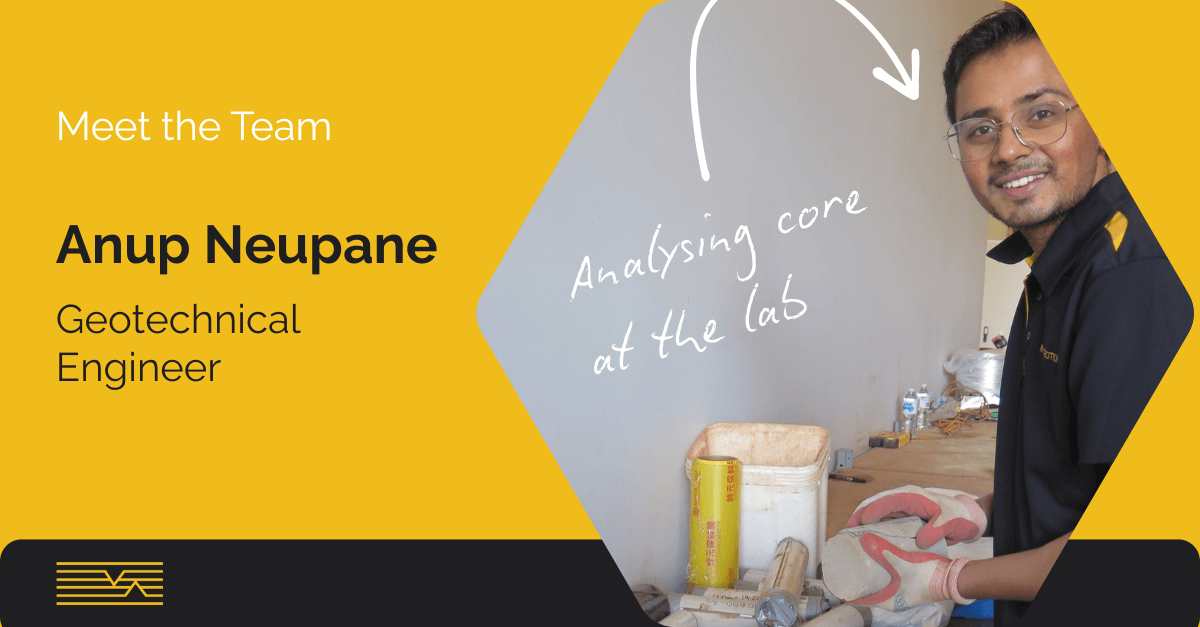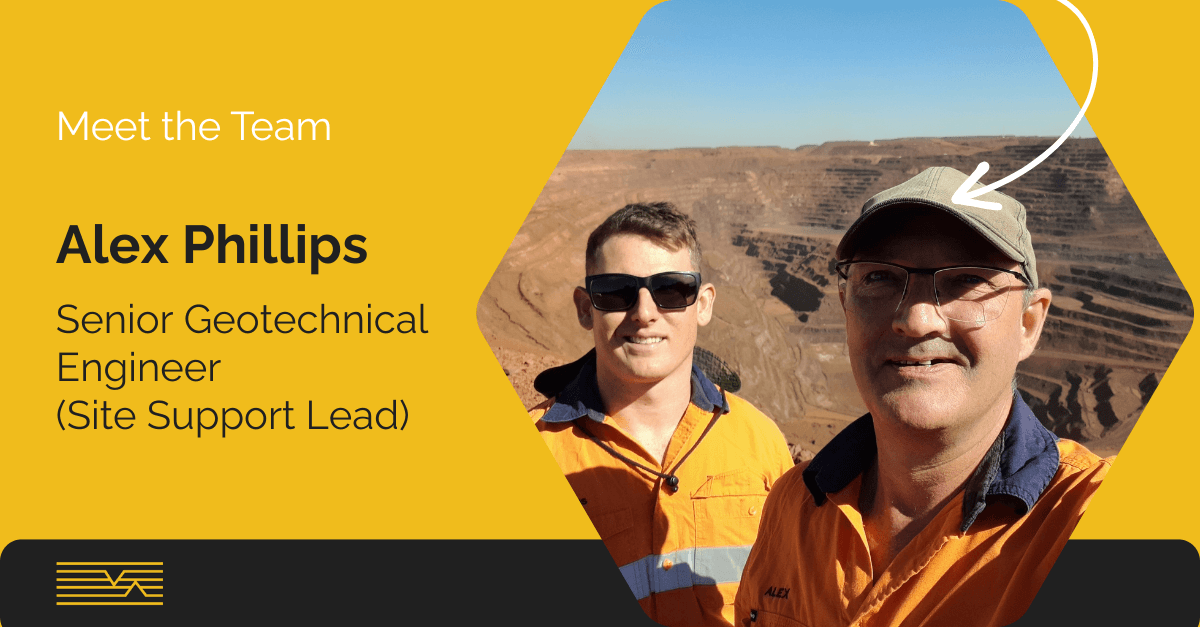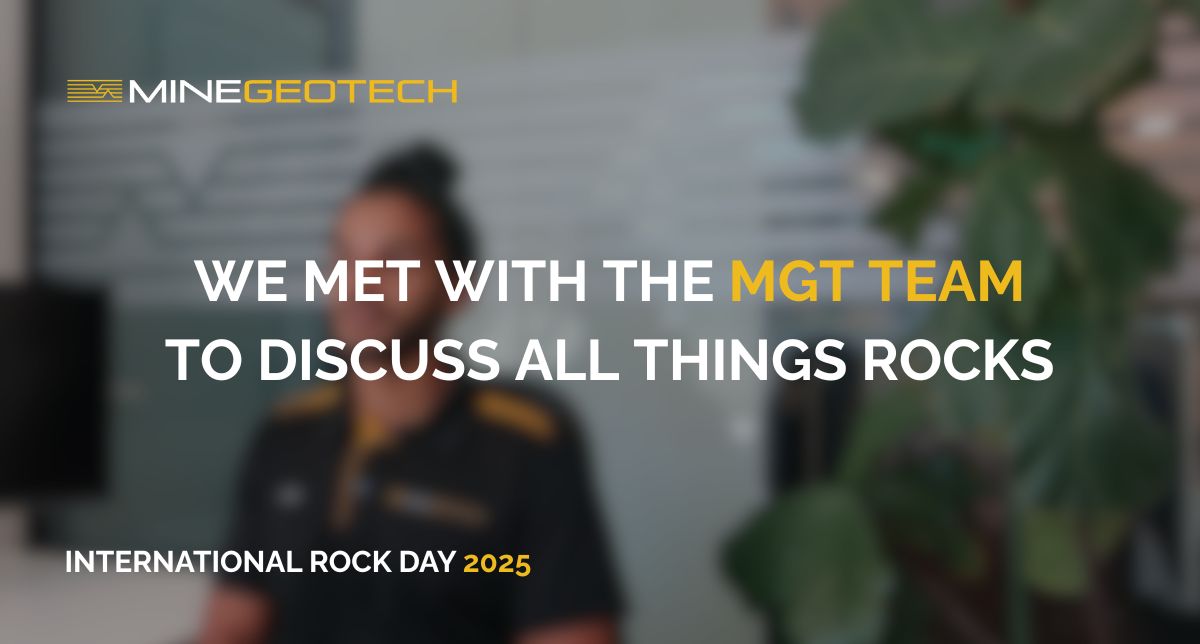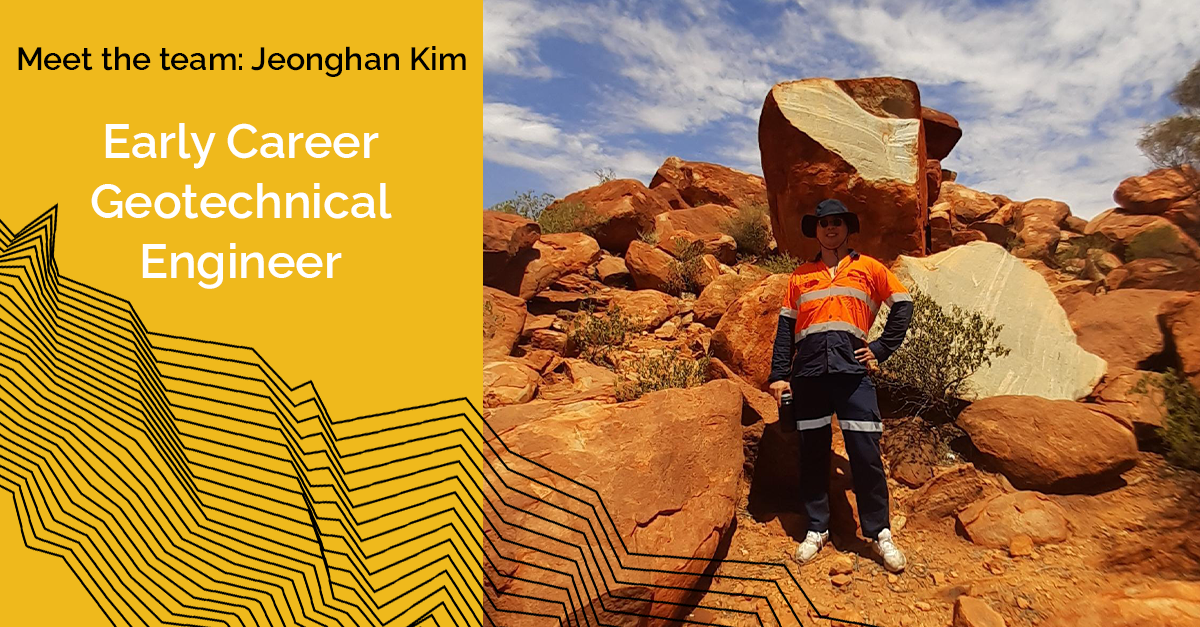Ishwor, Dahal
Geotechnical Engineer
What is your role, and how long have you been at MGT?
I am an engineering geologist/geotechnical engineer and I joined MineGeoTech last month.
What sparked your interest in this field?
I grew up in the lap of Mt. Gaurishankar, one of the highest peaks of the world, at the bank of the river Tamakoshi. The beautiful and enormous landscape of the Himalayas has always fascinated me. It depicts the entire gamut of the typical landscape of the Himalayas.
Our environmental science teacher had once asked a question, “How did this land-form, form?” None of us had a justifiable answer to that question. The only answer we had then was that Lord Brahma, from Hindu mythologies, created this highest mountain range on the earth.
However, I got my answer after joining B.Sc. Geology at Tribhuvan University. The Nepal Himalaya was formed by the collision of massive tectonic plates, the Tibetan and the Indian plate. The landforms we see today are products of never-ending denudation caused by weathering and erosion.
My passion for earth science began in early childhood, so I studied B.Sc. Geology from Tribhuwan University. During my undergraduate studies, a massive Gorkha Earthquake of 7.8M occurred where 10 thousands of people lost their lives, and huge loss and damage of infrastructure occurred. This was the moment I realised the importance of Geology, and I was more curious to know how to be a part of this profession.
Upon completing my B.Sc. in Geology, I worked as the site Geologist at Nagdhunga Tunnel Construction Project in the design and construction phase, one of the national pride projects in Nepal.
After that, I pursued my master’s degree in Engineering Geology from the same university. I was involved in the Sunkoshi Marine Multipurpose Diversion project, consulted by SMEC Australia where there was double shield TMB is used to excavate the 13.3 km long tunnel in Himalaya, Bhimphedi Kulekhani Tunnel Project, Trisuli Solar Project, MCA, MCC Transmission project. Being involved in all of these projects has helped me develop further into the field.
Share a memorable project story.
In 2018, during my master’s studies, I had a week-long break and the opportunity to participate in the Betan Karnali Hydroelectric Project (439 MW), during its feasibility stage. My job was to stakeout and finalise the drill hole locations based on the Topo survey map and engineering geological maps which included different project components.
The site was extremely remote, first a 45-minute flight from Kathmandu to Surkhet, then a full-day jeep ride to a place called Bejaura (last place on the road from Surkhet), and finally an 8-hour walk through dense forest to reach the Headworks site. There was no village nearby and we camped overnight. Luckily, I wasn’t alone, we had a big team – including some senior project engineers and the survey team, and I had some helpers from the office as well.
After completing left bank, we crossed the river to do a borehole stakeout on the steep cliff, forested right bank. That area had thick vegetation and loose scree material, and I’d heard that deer often roam there.
I was walking alone with my handheld GPS (as others were managing the work near the bank), wearing a black and green striped hoodie. Suddenly, I heard gunshots, two bullets fired close to where I was standing. I panicked and started shouting loudly. Thankfully, the shooter stopped. For a moment, I genuinely thought I wouldn’t make it back. When the firing stopped and I realised I was okay, I just sat down on the ground and took a deep breath.
Later, I found out that a local hunter had mistaken me for a deer. Due to my hoodie’s stripes, and absence of a trail or settlement, he assumed I was a deer in forest. Apparently, people sometimes cross the river to hunt deer using handmade glass bullets.
I was shaken, but very grateful to be alive.
Later on, I shared this moment with my team and we had a great laugh.
What is a quote that has stuck with you?
“Equipment has no brain, use your own”.
When working in the tunnel construction site, there was lots of semi-automated equipment, and this was their saying for safety.
What advice would you give to aspiring engineering geologists?
Stay curious, gain as much field experience as you can, and always connect theory with real-world geomechanics. The more you see on site, the better you’ll understand the ground response and stay open to new tech.
Who in your team would you like to give a shout-out to?
I am new at MGT and I’m not so familiar with everyone yet. Therefore I want to give a shout out to every person working for MGT!
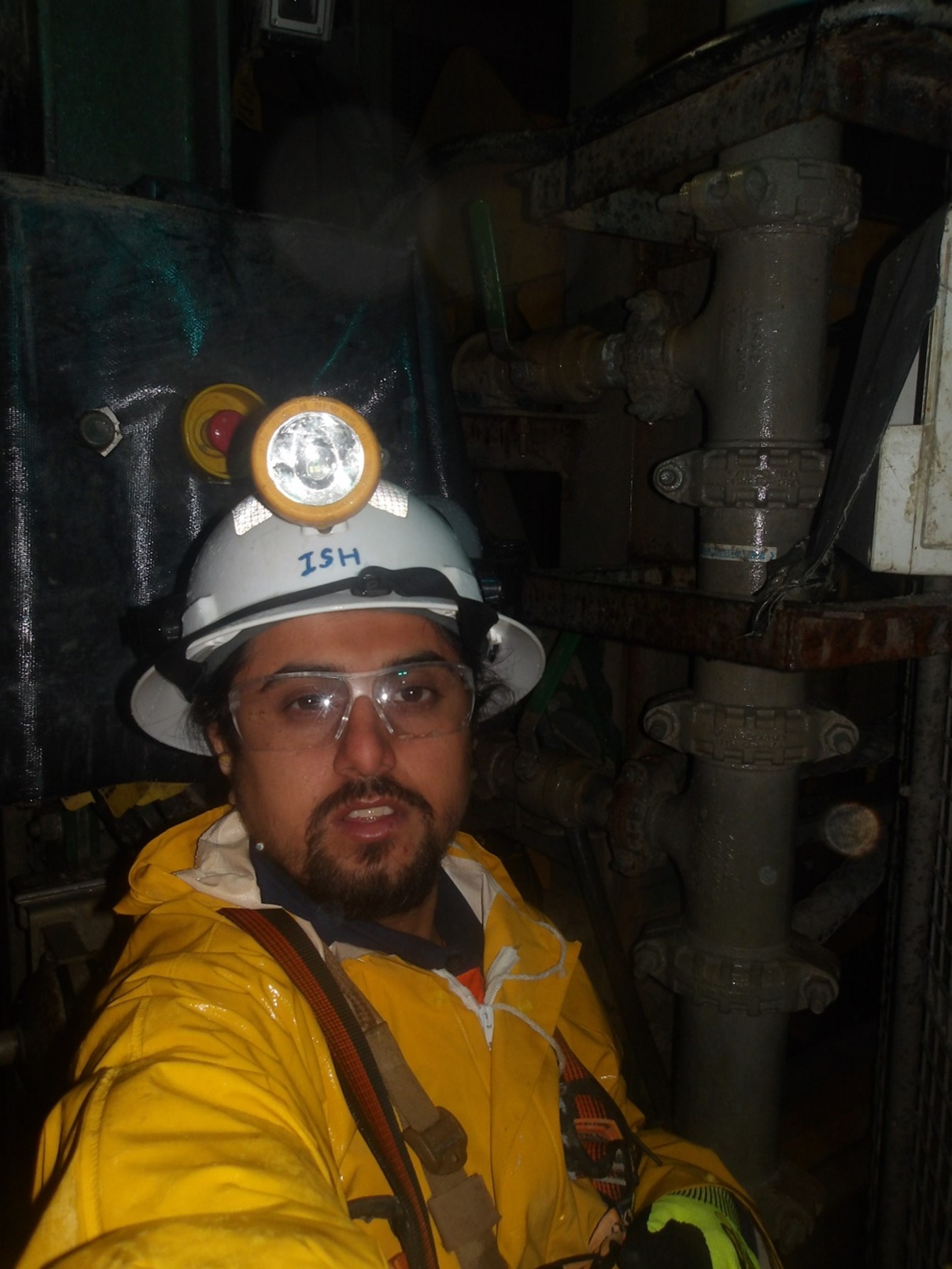
This is the first picture I took after joining MineGeoTech as an engineering geologist. It was a very proud moment which I captured to share.
Rapid-fire questions
When you were a kid, what did you want to be when you grew up?
As a kid, I had always dreamt of being an engineer.
How do you take your coffee? Or are you a tea person?
I don’t drink coffee much, just occasionally with friends; sometimes I prefer tea but not always.
What is one (or more) of your favourite hobbies?
I enjoy playing football, hiking, and travelling with friends, it keeps me active and helps me unwind.
Do you have a favourite rock/rock formation/mineral/element?
My favourite rock is garnetiferous schist, which are typically found near the main central thrust MCT of Himalaya.
The MGT Way is engineering advice
grounded in rigorous data analysis, enabling robust design.
Contact Us >
Our Services >
Meet the Team >
Explore Our Projects >

